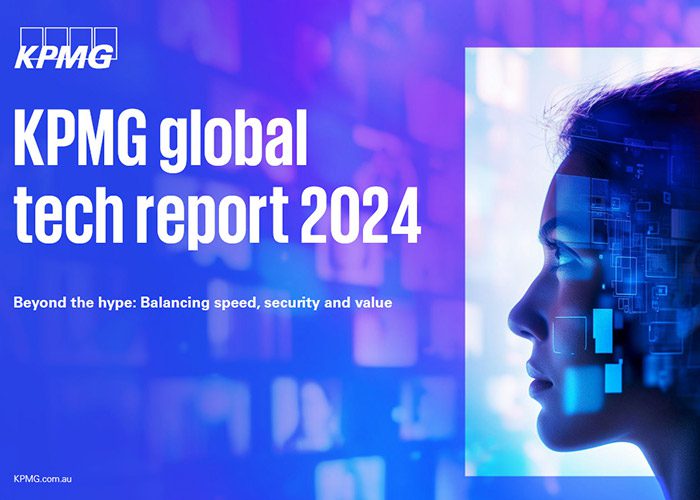Report Finds Many Australian Businesses Struggle With Technological Change
New KPMG research suggests the pace of change is leading to rushed technology decisions in Australian businesses.
The KPMG Global Tech Report surveyed 2,450 executives from 26 countries, including 138 from Australia. It focused on how tech leaders can avoid purely reactive tech investment by seeing past the hype and effectively balancing speed, security and value.
The research found that 70% of Australian tech leaders see AI as a game-changing technology, with 74% of respondents saying AI is already increasing the productivity of their knowledge workers and improving the overall performance of their organisation. However, just 28% of Australian leaders have successfully deployed AI at scale.
Most Australian technology leaders (81%) feel it is difficult to keep up with the pace of change, with 76% recognising their own role has evolved significantly over the past two years.
The KPMG Global Tech Report found that Australian organisations are spreading their investment across technology domains, with a particular focus on XaaS (83%) and AI (66%) in the next 12 months. For the most part, Australian organisations have informed their decision-making by utilising guidance from third parties (95%) and proof of concept testing (92%). However, the study identifies high-performing companies that are 22% more likely than other organisations to rely on customer feedback to inform investment decisions.
“Tech executives feel they are struggling with the pace of change, leading to the natural fear that they may be falling behind their competitors,” said KPMG Australia Partner Guy Holland. “This FOMO can lead to misguided investment decisions that may prove both risky and expensive, potentially increasing the burden of technical debt on organisations. This seems especially relevant when 69% of Australian organisations experience disruptions to business-as-usual on a weekly basis due to flaws in foundational IT systems, compared to a still significant 57% globally.”

“At the same time, the research identified high-performer organisations that make evidence-based investment decisions that align to the broader business and technology strategies and balance value creation with appetite for risk,” he said. “The technology leaders who are thriving are those who are paving the way by bringing structure, discipline and an enterprise mindset to the adoption of new technology.”
The research found that Australian organisations were very similar to their global counterparts regarding general tech maturity. On average across tech domains measured in 2023 and 2024, there was an increase of 12% in the number of organisations at the highest level of tech maturity (defined as organisations actively progressing business goals and proactive in adapting strategy as needed).
Overall, measurable gains are being made in Australia:
-
87% of organisations have managed to use tech to achieve higher profits (a 25% increase in respondents compared to 2023);
-
55% have achieved profit uplifts in excess of 10% from digital transformation in the last 24 months: and
-
87% of respondents that have implemented AI initiatives are already generating measurable value.
-
82% of respondents expect AI to pose challenges to existing operational structures;
-
76% of technology execs say they leverage customer feedback to make tech investment decisions. However, only 21% say they are very confident in using customer feedback effectively overall; and
-
The most common challenge likely to slow down tech transformation was ineffective governance (39%), and cybersecurity or privacy concerns (36%) of respondents relating to these issues.
“The key to tech success is basing investment decisions on genuine value, drawing on data insights, prioritising resilient solutions, and scaling with confidence,” Holland said. “When implementing new technology, tech leaders should look to align stakeholders around a clear definition of success that cascades into a set of tangible metrics. They should also remember that innovation is not restricted to new technology – in a fast-changing technology landscape, it’s vital to explore new ways to collaborate, co-invest and share risk with external partners.”
You can read the full report here.
Article originally published on Australian Cyber Security Magazine.
-
Stay up to date with the latest news and Security updates.
- Subscribe

